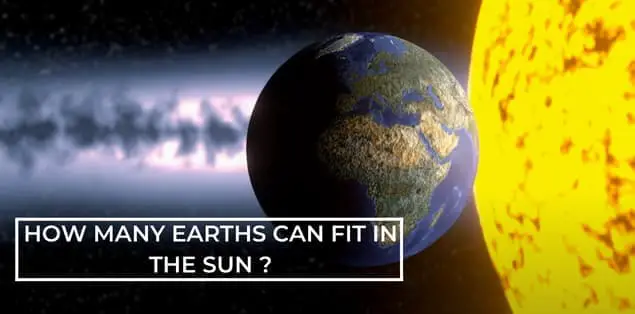So, how many Earths can fit in the Sun? The Sun is a star at the solar system’s core. It is a sphere that consists of very hot plasma and magnetic fields and has a mass about 330,000 times that of the Earth. At the same time, its diameter is around 1,392,000 kilometers (864,000 miles), which is approximately 109 times greater than the Earth.
The Sun is responsible for more than 99.86 % of the overall solar system’s mass, and the bulk of the remainder, 0.14 percent, owes to gas giants like Jupiter and Saturn.
Jupiter, located in our Solar System and the biggest planet, has a mass of 318 Earths. In contrast, Mercury, the smallest planet, only has a mass of 0.055 Earths. Having said that, how many Earths may potentially fit within the Sun?
In this article, we will discuss that.
So, without any further ado, let’s jump right into it!
How Many Earths Can You Fit in the Sun?
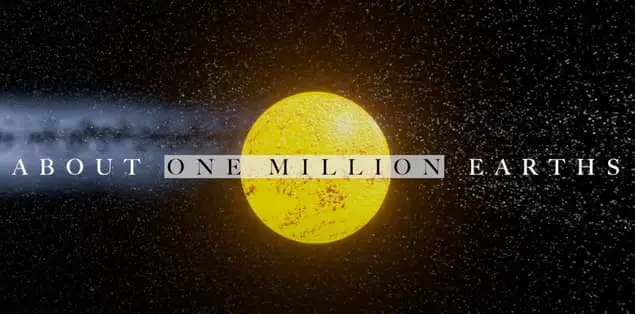
1.3 million earths can fit inside the Sun!
In comparison, the size of the Sun is around 338 x 1015 mi3, whereas the size of the Earth is approximately 260 x 109 mi3 (1.08 x 1012 km3) (1.40 x 1018 km3)
If we do the calculations, we discover that the Sun has enough space inside of it to accommodate 1.3 million Earths. However, this count is only reliable if we assume that we tightly pack all these Earths together, leaving no room between them. If we were to put perfectly spherical Earths within the Sun, there would only be enough for 960,000 of them before the space would be full.
Not only is the Sun enormous, but it also has an incredible amount of mass. The Sun’s mass is about 330,000 times that of the mass of the Earth. The mass of the Sun is 1,000 times greater than that of even Jupiter, the biggest planet in the universe.
This demonstrates how enormous our star, the Sun, really is. Even more astonishing is the realization that a great number of the stars in the cosmos are much more massive than the Sun. The largest star ever discovered UY Scuti has a volume 5 billion times that of the Sun. It can hold 650 x 1013 times as many Earths as the Sun.
A star’s lifetime will experience gradual but consistent growth in size. The vast majority of stars reach their maximum size and transform into a giant red mass when they use up all of the hydrogens in their cores and continue to expand. These red giants can be anywhere from one hundred to one thousand times the size of our own Sun.
This indicates that anything from 130 thousand to 1.3 million Earth might potentially fit inside the red giant’s interior. This demonstrates that the vast universe we live in is far more wondrous than we can ever fathom.
How Many Earth Moons Can You Fit in the Sun?
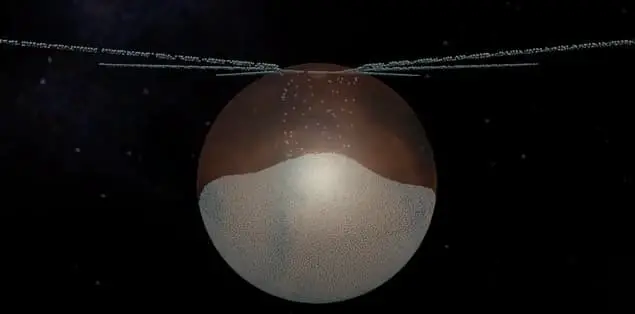
You can fit 65 million Earth Moons inside the Sun.
The Moon, which is Earth’s natural satellite, is a stunning celestial body that seems white in color and is covered with craters. Its size and shape are always changing, appearing to wane and then fill the sky.
The volume of the Moon, which researchers have estimated to be up to 5.2 billion mi3 (8.4 billion km3), is only equivalent to one-fiftieth of the volume of the Earth. This indicates that the amount of Moons necessary to fill the Sun is about fifty times greater than the quantity of Earths necessary. That brings the total number of moons that might fit within the Sun to 65 million.
How Many Moons Would Fit in the Earth?
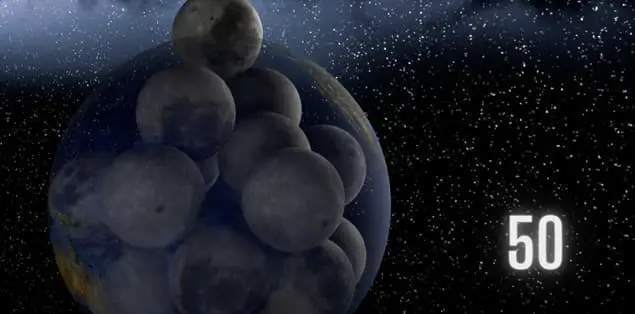
Earth is big enough to accommodate 50 of its moons. The diameter of Earth is 12,742 kilometers, but the diameter of the Moon is 3,474 kilometers; this means that the Moon is about 27 percent larger than Earth. Because of Earth’s greater density, it would take 81.5 Moons to achieve the same mass as the planet Earth.
The Moon’s diameter is much less than that of the United States. In addition, there is no atmosphere on the Moon, and its gravity is just one-sixth that of Earth. As per NASA, the Moon is around 4.5 billion years old, and it most likely originated due to the damage caused by a collision between Earth and a celestial body approximately the size of Mars.
How Many Jupiters Would Fit in the Sun?
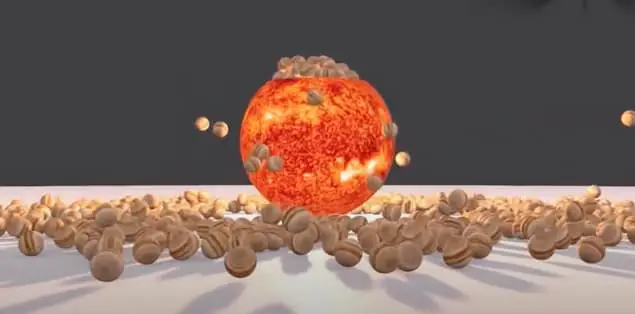
1000 Jupiters will fit inside the Sun.
Even though it is the largest planet in our Solar System, Jupiter is a speck in the background when measured against the Sun or any other aspect.
At its equator, Jupiter has a diameter of about 142.984 kilometers (88.846 miles). Its poles have a diameter of around 133.708 kilometers (83.082 miles). It has a mean radius of 69.911 kilometers, which is comparable to 43.440 miles, and its mass is equivalent to 318 times that of Earth. Jupiter has enough room to hold 1,300 Earths inside of it.
In some respects, Jupiter may seem rather spectacular; nonetheless, it would only take around one thousand planets of Jupiter’s size to fill the Sun.
How Many Earths Can Fit In the Distance From the Earth to the Sun?
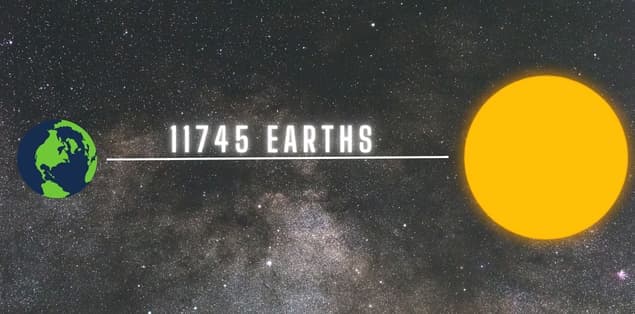
11745 Earths can fit in the distance from the Earth to the Sun.
A vast distance that separates our planet from the star that is its father, the Sun, the most massive member of the solar system’s extended family, appears to us as being about the size of a large grapefruit.
This number is equivalent to around 93 million miles (149 million km). In comparison, the diameter of our cherished planet Earth is merely 7,917 miles (or 12,742 kilometers) in circumference. This indicates that around 11,745 Earths may fit in the space that separates the enormous gas ball from our blue planet.
On the other side, you require only 107 Suns to fill this distance; simply, it demonstrates how enormous our Sun is.
Something even more amazing is that our galaxy is full of galaxies considerably larger than our own. Also, many other galaxies in our universe are far larger than ours.
How Many Earths Can Fit in the Diameter of the Sun?

The diameter of the Sun, which is 1,392,678 kilometers, is an astounding 865,370 miles, and its radius is 432,685 miles (696,339 km).
Suppose you line up planets the size of Earth, each with a diameter of approximately 7,900 miles (12,714 km) and a radius of roughly 3,950 miles (6357 km), one after the other along the diameter of the Sun. As a result, there will be space for 109 planets the size of our home planet within the diameter of the Sun.
Jupiter, the largest of the planets, has a radius of 43,440 miles (69,910 kilometers). It is sufficient to cover the Sun’s diameter if you line up only 10 of its side by side. Mercury, on the other hand, having a radius of just 1,516 miles (2,440 kilometers), can fit roughly 570 of itself along the Sun’s diameter. Mercury is the planet with the smallest diameter.
In the distant future, it may be possible to fit even more planets like Earth or Jupiter inside the Sun. However, as it draws closer to the conclusion of its lifespan, the Sun proceeds to convert hydrogen into helium at its core. Hence, this results in both a temperature increase and size growth.
When it finally runs out of fuel, the Sun’s core will implode and start heating up at a furious rate, which will cause the Sun’s outer layers to swell.
Approximately five billion years ago, when the Sun was just beginning to develop, it was already approximately 20 percent bigger than it is now. Then, when the Sun reaches the end of its helium-burning phase, which occurs after another five billion years, it will transform into a red giant.
At this point, it will have grown to such a size that it will fully consume the planets Mercury and Venus and may even consume the Earth.
Read Also: Why Do All the Planets Orbit in the Same Direction
Final Words – How Many Earths Can Fit in the Sun?
Because the Sun is the biggest entity in the solar system, all other planets and satellites in the system can fit within it to varying degrees, depending on how many there are. For example, it would require seven million to completely cover the Sun with the planet Mars, which is present nearby. In contrast, Jupiter, the biggest planet in the solar system, would only need 1,000 of its own to fit.
Mercury, the least massive of the planets, would have to multiply itself 23.2 million times to fill the Sun.
So, there you have it, a complete guide on how many earths can fit in the sun.
